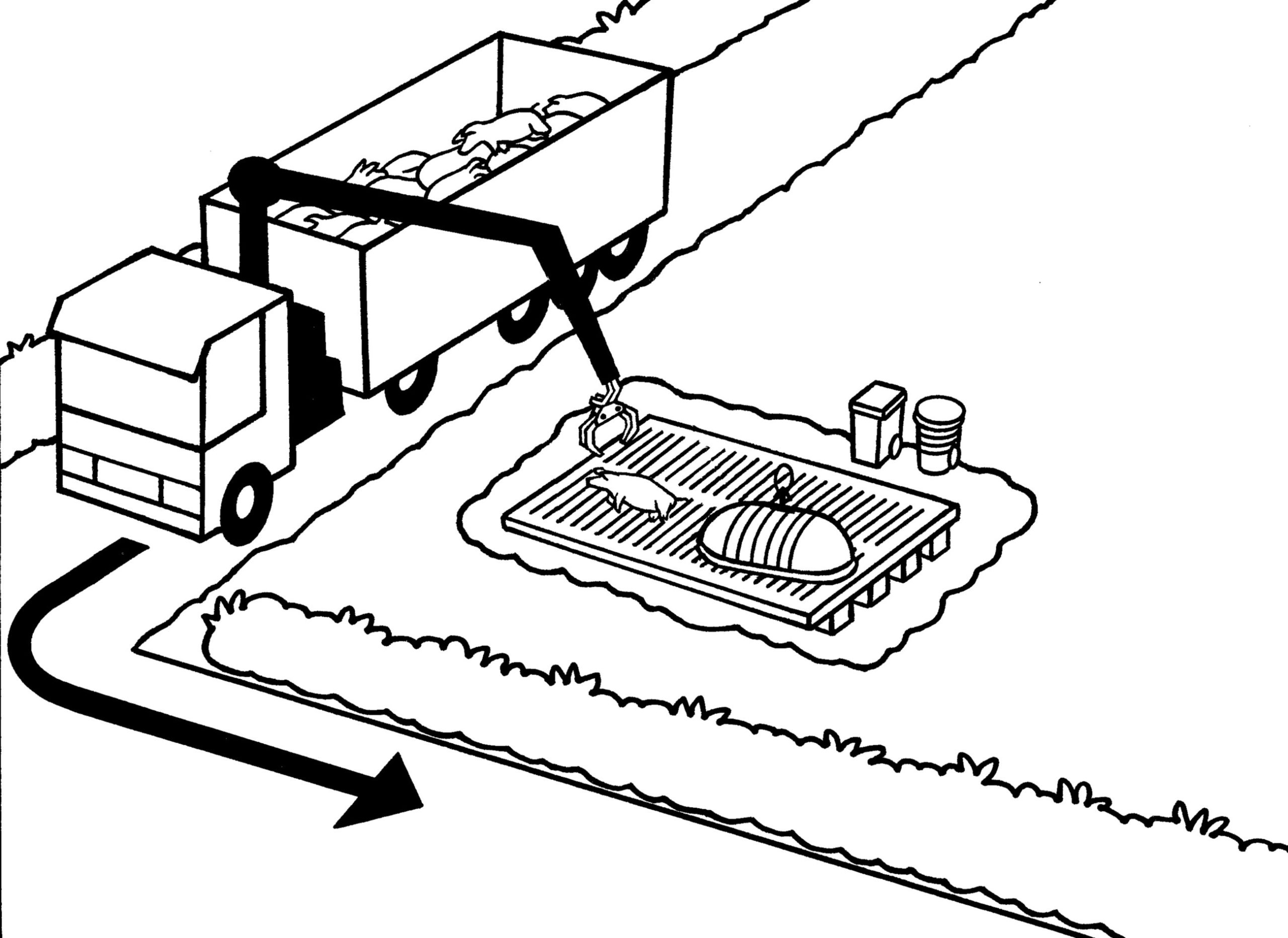
Sjælland: Driver praises farmers: “A little effort makes my job a lot easier”
Farmers on Zealand who have animals picked up by Daka can usually meet Jacob Pilegaard or his father John Pilegaard when they pick up animals for Daka in this part of the country. Soon their route will be extended to cover the whole of Funen.
Five years ago, 26-year-old Jacob Pilegaard got his truck driver’s license. He immediately climbed into the cab of one of his father, haulage contractor John Pilegaard’s, and started driving routes all over the country.
“Actually, I trained as a construction engineer, but after I graduated, I got my licence and I’ve been driving ever since,” says the young truck driver.
The job brings good chats as he picks up animals around the island’s farms. The young driver is on good terms with everyone he picks up dead animals from.
“We just wave to them from the truck and they come over if we need to have a dialogue. There are several places where we are not allowed near the stables because of the risk of infection,” explains Jacob Pilegaard and continues:
“It’s often not the farmer himself I talk to, it’s just as often an employee, because they’re the ones who deal with the dead animals on a daily basis, and that’s also really good.”
Most people are very concerned about the conditions at the collection point, and there are only a few shortcomings.
“I can easily have a good chat with them if the conditions at the pick-up site are not optimal. It doesn’t take much for them to see that a little effort makes our job a lot easier,” he says.
Tips for a good pick-up place
For five years, he has collected dead animals on Zealand, and then driven the boxes all the way to Randers. From autumn 2022, the same truck driver will pick up animals on Funen, so the route is almost the same – just with more stops.
Jacob Pilegaard hopes to establish the same good relationship with farmers on Funen as he has with those on Zealand when the new route starts in November. Because it’s not just the dialogue that’s good. He also praises the farmers for the conditions at the collection point. The neat pitches are well screened, he believes.
“There are a lot of people who really care. They’re really good about picking up some fencing from a builders’ merchant so they can screen off the road. I think it’s an easy way to keep the dead animals out of sight of passers-by,” he says.
The pick-up site’s screening should be less than 1.40m high, so the claw can get to the grab without touching the screening. The Zealand farmers have also done a good job here, Jacob says:
“They put three pieces of fence in a “U” so that it’s completely open on one side. That way I don’t have to dig across the fence. It also prevents me from destroying it when the claw lifts.”
Avoid stacks of animals
It is important that dead animals are placed correctly in relation to the truck, but also that they are placed individually as far as possible. This ensures good ventilation, which means that the animals are fresher when picked up, but also that they are easier for the driver to grab.
“I’ve found that there can be a stack of 10 animals that I find difficult to grab without risking the animals getting punctured. The animals should preferably be lying on the ground like on a barbecue grate – one after the other. That’s the easiest way to pick them up,” he explains.
This particular case was resolved quickly, says the driver, who simply explained the situation to the farmer concerned.
“They understood perfectly. On the one hand, we don’t have to stand and dig down into a pear cluster, but it also means the place stays tidy when the animals aren’t rotting and breaking when we grab them.”

The snout against the side of the truck
Kontakt

Lars Jørgen Nielsen
E-Mail: ljn@daka.dk
Phone: +45 5156 4092
Mobile: +45 5156 4692

